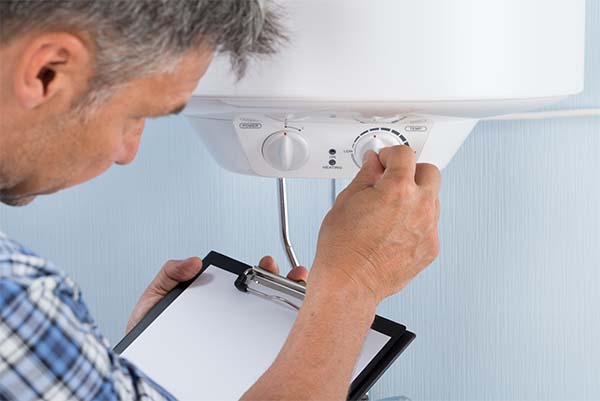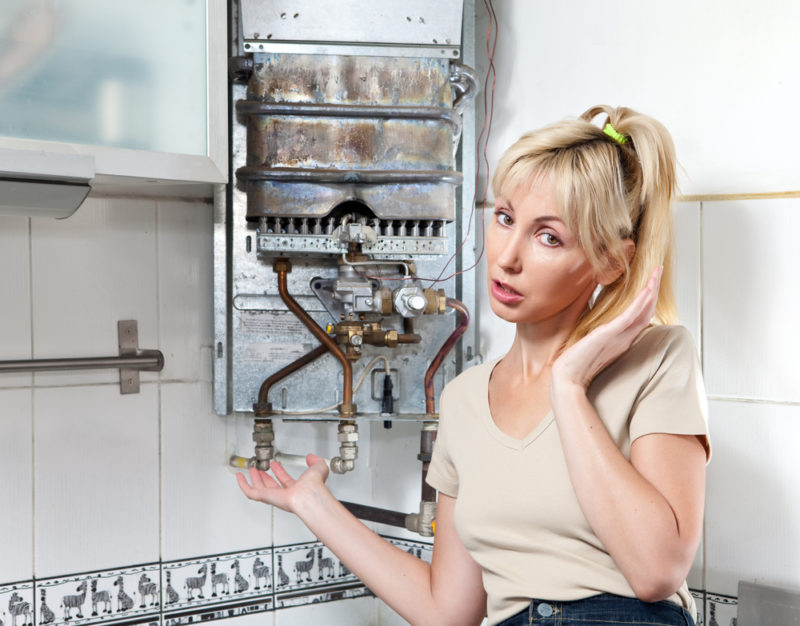What are your opinions about Broken Water Heaters?

Whether it is located in the cellar or a different room, damaged hot water heater can create tension. A typical unit holds 80 gallons, so an overnight leak will certainly cause a flooding. This causes significant home damage with soaked wall surfaces and floors. Besides, having no warm water supply is also frustrating. If you are dealing with these problems, make note of the following:
Call the Plumber
After doing the first two safety steps, you should call your plumber to come right away to repair a ruptured water heating system. There are typically indicators that your aging water heating unit has debris accumulation in the inside.
- Rusty water coming from the hot water faucet
- Weird sounds from within that program sedimentation
- Leaking links
- Pooled water under the container due to small pinholes
- Do not wait for major flooding to call the plumber. Already, you will certainly have to spend more to recover your residential or commercial property. Instead, as quickly as you detect these signs, have an expert pertained to evaluate your hot water heater container. Generally, water heaters have a life expectancy of regarding 8 to 12 years. With routine evaluation as well as maintenance, you can prolong its life.
Cut Off the Cold Water Supply
Cut off the storage tanks tap water supply from the resource. This goes from your primary water line into the container. When your storage tank is in good condition, the cold water quits filling up when the tank is complete. But given that it is dripping, the water will remain to flow. Shut the shutoff discovered on top of the heating system. Rotate this clockwise to shut it off. If you can not discover it or reach it, you need to turn off that main supply of water line outside your building.
Turn Off Power Source
Before calling the plumber, shut off a gas water heater by transforming the temperature level dial. This is generally situated on top of the thermostat. Change off the circuit breaker if you have a model that runs on electrical power. This will certainly avoid electrocution, especially if there is a leakage as water is a conductor. Normally, the heating element shuts off when the water strikes a particular temperature level. However with a broken container, it may malfunction. Cutting it off ensures you stay risk-free.
Clean Up Building
After calling the plumber, paper damages by taking notes as well as images so you can declare your house owner's insurance coverage. Remove any kind of standing water to protect against mold and mildew and also mildew growth. If you have a completely submersible water pump, make use of that to drain pipes the water.
Remember, if you discover any type of problems with your hot water heater, call the pros right away. You can not take this problem lightly because a defective thermostat can raise water temp to an alarmingly high level, resulting in unintentional burns. A damaged heating system stress relief valve can also cause a surge. For finest results, obtain a yearly check so your system gets evaluated, cleaned up, drained, and also re-filled, guaranteeing optimal efficiency.
After doing the very first 2 safety steps, you must call your plumber to come right away to repair a fractured water heater. Instead, as quickly as you detect these signs, have an expert come to evaluate your water heater tank. Before calling the plumber, closed off a gas water heating system by transforming the temperature level dial. If you have a completely submersible water pump, utilize that to drain the water. Keep in mind, if you observe any type of concerns with your water heating system, call the pros right away.
8 REASONS YOUR HOT WATER HEATER IS NOT WORKING & HOW TO FIX
Water Heater Problems & Solutions
Loose or Damaged In-Line Valve
Unlike a water leak near the bottom of your water tank, a water leak on top of your system can be easily fixed. A common cause of water tank leaks includes a loose in-line valve. This is a handle that is located at the top of the water tank that is engineered to activate or deactivate the flow of water. To fix this problem, you will need to secure the nut that holds the ball or in-line valve in its location. If the leak becomes more severe once it is tightened, you will be required to travel to your local hardware store to purchase a new in-line valve for your water heater.
Damaged Pressure Relief Valve
Most types of water heaters are equipped with a pressure relief valve that is engineered to discharge pressure from the water tank when it becomes too high. If this valve on top of your water heater begins to leak, we recommend purchasing a new one online or from your local store. The process of removing and replacing pressure relief valves is not complicated.
No Warm Water
If you have an electric water heater in your home, the most typical cause of a lack of warm water is a broken heating element. Your water heater is equipped with two heating elements that are tasked with heating incoming water in the water tank. Once a heating element begins to malfunction, you will have little to no hot water to use for showering, cleaning, and laundry.
Low Supply of Hot Water
Are you continuously running out of warm water? This issue may be a byproduct of a cracked dip tube. This tube is engineered to push cold water to the base of your water tank to be heated. Once a crack or hole begins to form in the dip tube, the incoming supply of cold water may be released near the top or middle of your tank. As a result, the cold water on top of the tank will be sent to the faucets and showers in your house. This hot water heater problem can only be fixed by replacing the dip tube on your system. Since the process of installing a new dip tube is complex, we recommend calling a certified technician for help.
A low supply of warm water may also be a signal of excess sediment buildup in your water tank. As your water heater reaches the middle of its life cycle, minerals in water including magnesium and calcium will begin to collect at the base of the water tank. As the minerals continue to grow, there will be less room in the water tank to store hot water. To resolve this problem, flush your water heater to remove the excess minerals.
Water is Too Warm or Cold
If the water in your shower feels uncomfortable hot or cold, you can adjust the temperature of your water by changing the settings on your thermostat. Setting the temperature to 120 degrees Fahrenheit may help you save money on your utility bills. This is an excellent temperature to use if you’re worried about scalding or skin irritation. Does this temperature feel too cold? You may also adjust the thermostat to 140 degrees Fahrenheit to make your showers more pleasant. If your hot water heater is not working when you change the temperature, this is an indicator of a broken thermostat. Immediately find a certified plumbing or heating contractor in your area to repair or replace your thermostat.
Low Water Pressure
Low water pressure is not always caused by a malfunctioning water heater. If you live in an older home with smaller water pipes, the flow of water will be restricted prior to reaching our kitchen or bathroom skins. The only way to eliminate this hot water heater problem is to connect new ¾-inch water lines to your system. Another type of problem that may negatively impact your water pressure includes calcium deposits in water pipes.
As magnesium and calcium begin to form in your pipes, the diameter of your water lines will become smaller. As a result, the warm water from your water heater will not be able to travel in an efficient manner to your sinks or appliances. Since the process of replacing water pipes includes removing drywall, an average homeowner that does not have a plumbing license will not be able to fix this hot water heater problem.
https://www.wmhendersoninc.com/blog/8-reasons-your-water-heater-is-not-working-how-to-fix/

We were made aware of that write-up about Broken Water Heaters through an associate on another blog. Remember to take the time to promote this blog posting if you liked it. Thank-you for taking the time to read it.
Free Estimate
Comments on “Necessary Protocols for Homeowners Managing Malfunctioning Water Heaters”